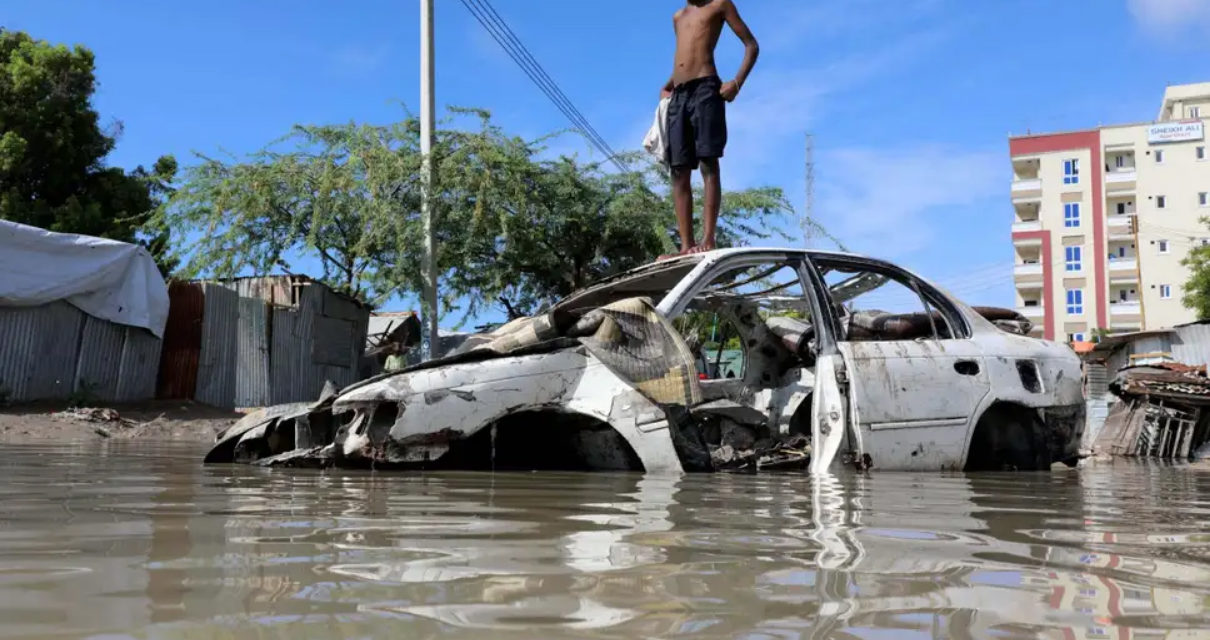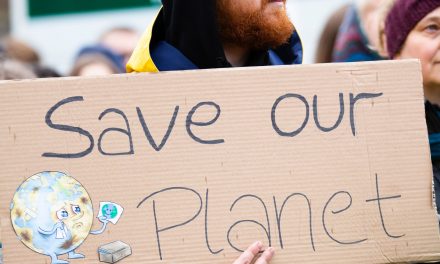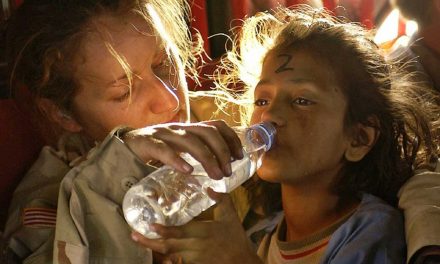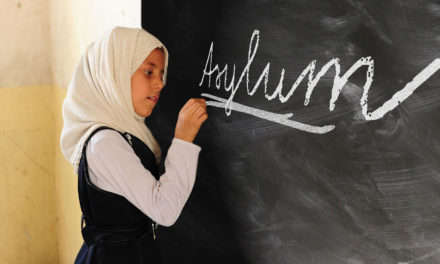A humanitarian crisis has developed in Somalia after days of torrential rains and flooding left up to 200,000 people displaced in the town of Beledweyne. According to the agency Save the Children, around half of those displaced are children who were forced to leave their homes as the town was submerged in water.
Around 85% of Beledweyne, a city located in Central Somalia, has been overwhelmed with floods leaving its 400,000 residents fleeing for their lives, said the UN’s Office for the Coordination of Humanitarian Affairs (OCHA).
According to the OCHA, three people including two children have lost their lives after a nearby river burst its banks on Saturday. It was also reported that a boat carrying 20 people had capsized leaving many feared dead. However, several families have managed to escape on tractors, boats, donkey carts or on foot, said Save the Children.
“Somalia is the frontline of the climate crisis, and resources are being stretched to their limit,” said Mohamud Mohamed Hassan, the country director for Save the Children Somalia.
Those who have managed to escape the area have reportedly made make-shift camps on higher ground, yet are still in dire need of food, water, and other resources. The flood has managed to destroy farmland, roads, and infrastructure, leaving the city in a critical condition.
Unfortunately, it appears that the flooding will not subside yet. More rain is predicted in the coming days and a Tropical Storm is expected in Puntland and Somaliland, bringing strong winds, rain, and possible flash floods.
Somalia’s Prime Minister Hassan Ali Khayre has set up an emergency committee to manage the humanitarian response.
Failure of a Government?
Many believe that the government has not tackled the climate chaos effectively, particularly when it comes to disaster prevention measures and infrastructure. The rainfall season arrives annually between October and December; therefore, the occurrence of flooding and intense rainfall isn’t uncommon. However, despite several warnings from humanitarian agencies, the government has not yet prioritised tackling the issues that plague Somalia so frequently.
Most of Somalia’s population depend on crops for their livelihood, making it that much more difficult to deal with severe weather conditions. From droughts to flooding, Somalia’s population will continue to suffer until tangible efforts from the government are implemented.
As climate change affects much of the world in different ways, Somalia and other countries in the Global South will bear the brunt of it.
Photo credit: The Independent
- This Artist is Making the Underwater Arena His Canvas - 28th April 2021
- A Video Game that Promotes Peace and Conflict Resolution - 15th March 2021
- Netflix’s ‘Living Undocumented’ is a Difficult Series to Watch, and Exactly Why We Should - 9th March 2021






